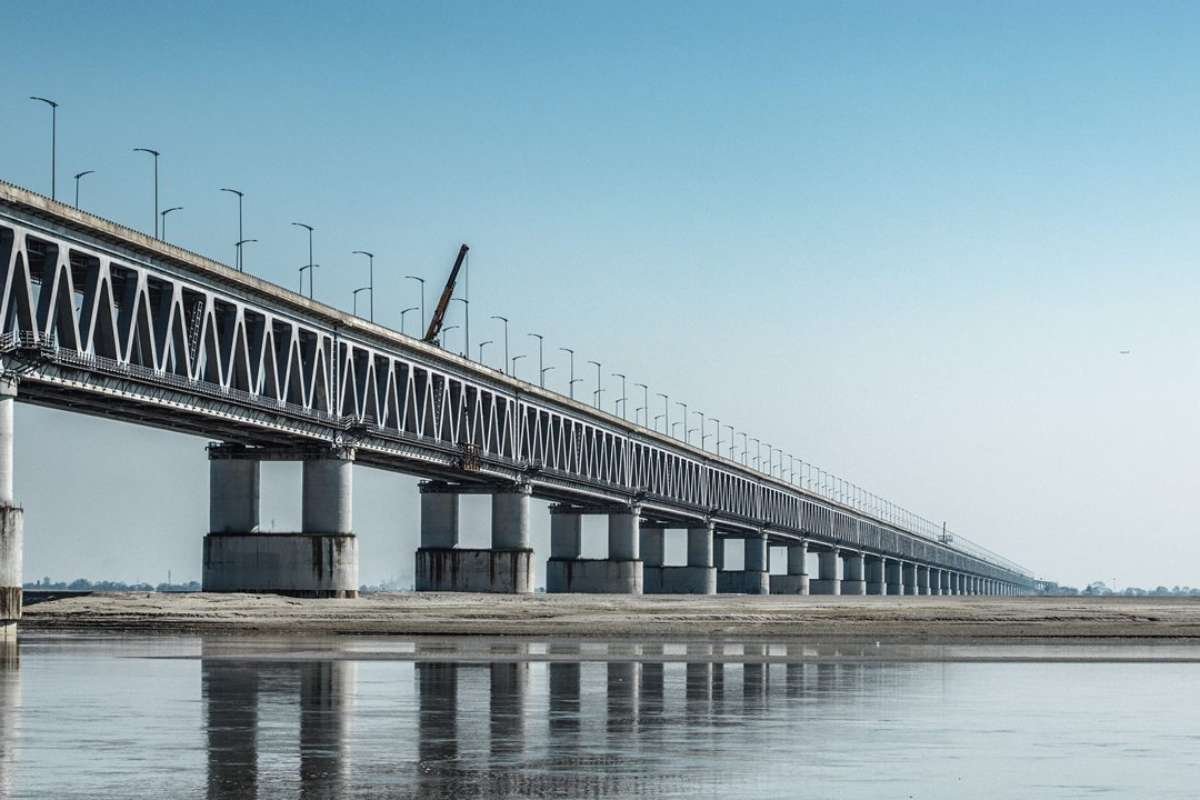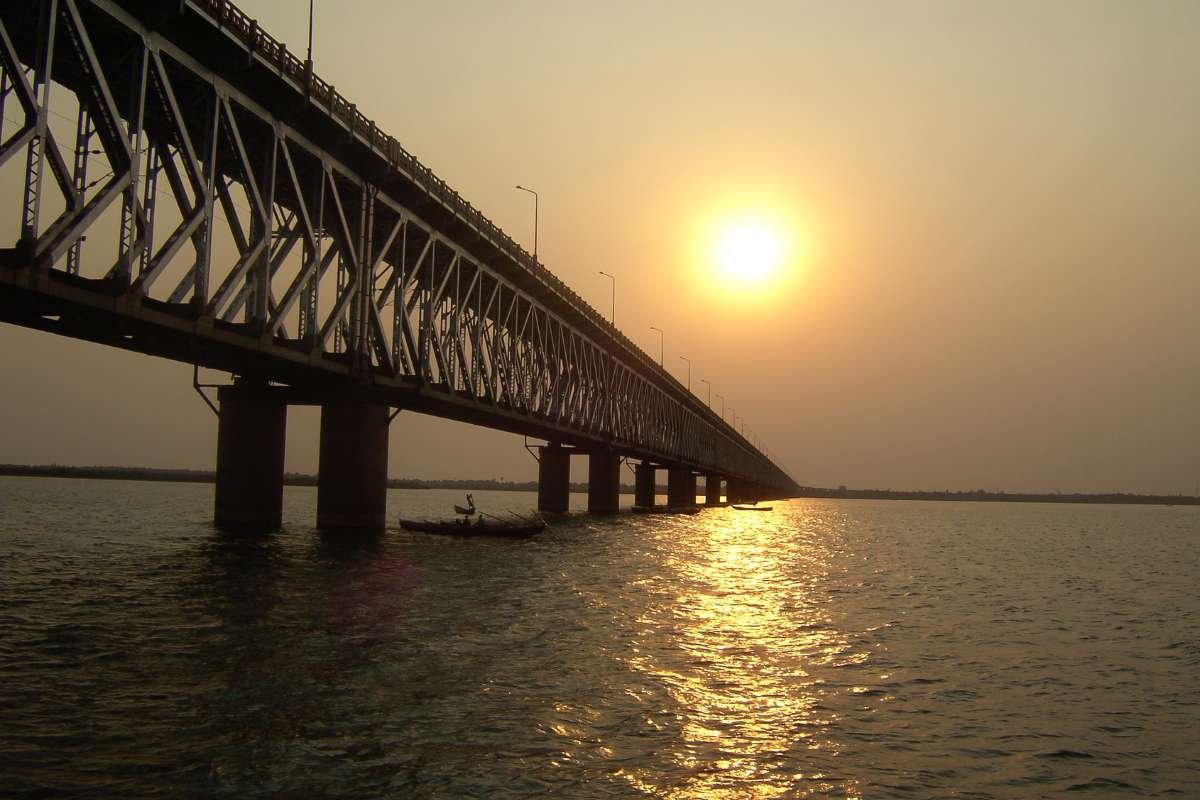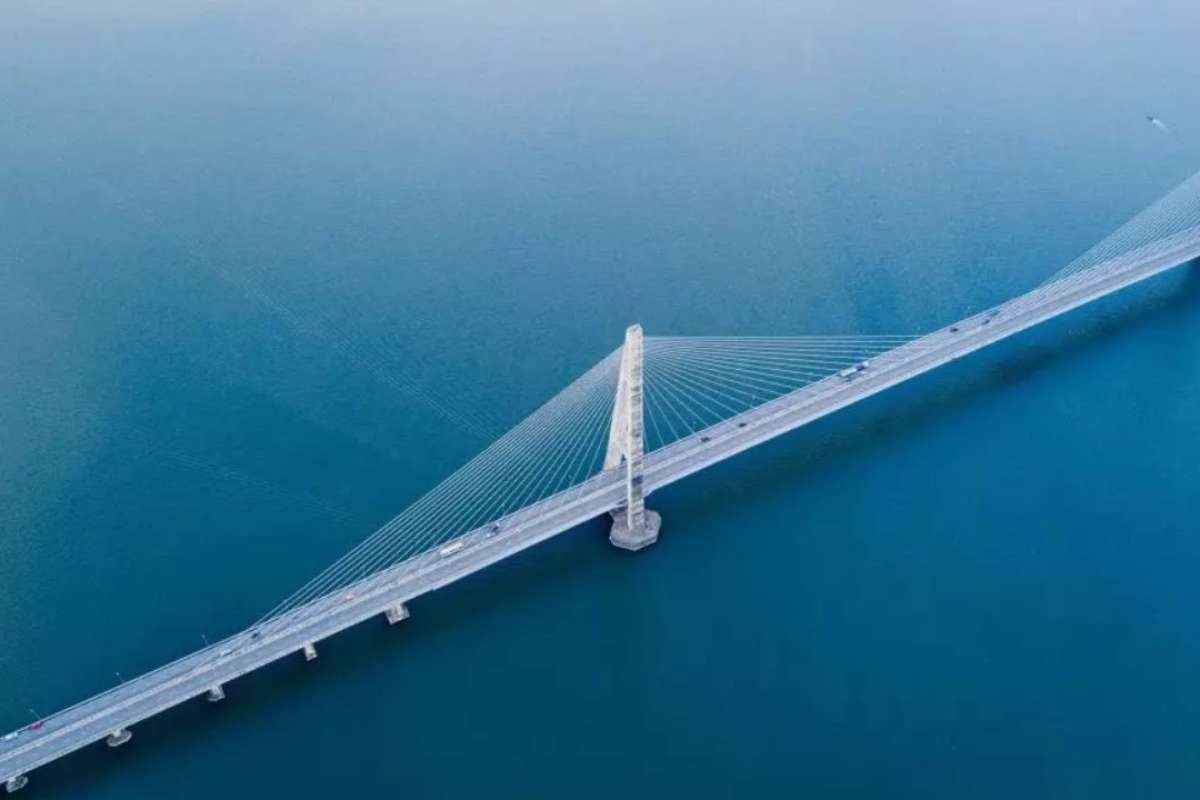India is home to some of the world’s most magnificent infrastructure projects, and its bridges are no exception. From soaring over vast rivers to stretching across the Arabian Sea, these colossal structures are marvels of modern engineering and pivotal to national development. The longest bridges in India are not only lifelines for transportation but also symbols of the country’s growing economic and strategic prowess.
As of 2025, India’s bridge network has expanded impressively, with projects catering to both civilian and military needs. Let’s explore the top 10 longest bridges in India, highlighting their unique features, locations, and impact.
1. Atal Setu – India’s Longest and Most Ambitious Sea Bridge
Length: 21.8 km
Location: Mumbai, Maharashtra
Atal Setu, also known as the Mumbai Trans Harbour Link, is the crown jewel among the longest bridges in India. This 21.8 km sea bridge connects Sewri in South Mumbai to Nhava Sheva in Navi Mumbai, offering a game-changing reduction in travel time.
As India’s longest bridge, it enhances connectivity to the Mumbai International Airport and the upcoming Navi Mumbai Airport. Atal Setu showcases India’s leap into world-class marine infrastructure, designed to ease congestion and boost trade.
2. Dhola Sadiya Bridge – The Strategic Link to the Northeast
Length: 9.15 km
Location: Assam
Also known as the Bhupen Hazarika Setu, this bridge is the longest of its kind in the Northeast and holds second place among the longest bridges. Stretching across the Lohit River (a tributary of the Brahmaputra), it connects Assam and Arunachal Pradesh.
Inaugurated in 2020, the bridge plays a vital role in defense logistics, allowing rapid troop movement to the Indo-China border. Its presence reinforces India’s commitment to strengthening infrastructure in remote regions.
You Must Read:
- From Majestic Mountains to Serene Beaches: The Most Beautiful Places in India
- Exploring the Mighty Waterways: The Longest Rivers in India
3. Dibang River Bridge – Strengthening the Border State
Length: 6.2 km
Location: Arunachal Pradesh
The Dibang River Bridge, also known as the Sikang Bridge, is one of the most vital bridges in India due to its location in a border-sensitive area. It enhances connectivity for the Indian Army in Arunachal Pradesh, enabling quick mobilization in strategic zones.
Despite its utilitarian nature, the bridge is a masterpiece of engineering, overcoming extreme terrain and climatic challenges in India’s northeastern frontier.
4. Mahatma Gandhi Setu – A Historic Marvel on the Ganges
Length: 5.75 km
Location: Bihar (Patna to Hajipur)
Inaugurated in 1982, this bridge was once the longest bridge in India and even among the longest globally at that time. The Mahatma Gandhi Setu spans the Ganges, connecting the cities of Patna and Hajipur.
Though now surpassed in length, it remains among the longest bridges in India and continues to serve as a vital artery for millions in Bihar.
5. Bandra-Worli Sea Link – Mumbai’s Signature Icon
Length: 5.57 km
Location: Mumbai, Maharashtra
The Bandra-Worli Sea Link, or Rajiv Gandhi Sea Link, ranks high on the list of longest bridges, though its architectural elegance steals the spotlight. A cable-stayed bridge with breathtaking sea views, it connects Mumbai’s western suburbs with the city’s commercial hubs.
Besides decongesting traffic, the bridge is a visual representation of Mumbai’s urban sophistication and India’s design capabilities.
6. Bogibeel Bridge – Northeast’s Road-Rail Wonder

Length: 4.94 km
Location: Assam (Dhemaji to Dibrugarh)
Bogibeel Bridge is a combined road and rail bridge, one of the few of its kind among the longest bridges in India. It spans the Brahmaputra River and is India’s first fully welded bridge, built to withstand earthquakes.
Strategically critical, it ensures seamless movement between Assam and Arunachal Pradesh, serving both civilian and defense needs in the Northeast.
Dom’t Miss:
- The Longest National Highway in India: A Road That Connects the Nation
- Vivek Express: Exploring the Longest Train Route in India
7. Vikramshila Setu – A Tribute to Ancient Academia
Length: 4.7 km
Location: Bhagalpur, Bihar
Named after the ancient Vikramashila University, this bridge spans the Ganges near Bhagalpur. It connects Barari Ghat and Naugachia, greatly improving intra-state connectivity in Bihar.
Among the longest bridges in India, Vikramshila Setu also stands out for blending historical significance with present-day utility, especially for regional commuters and traders.
8. Ganga Rail-Road Bridge – Bridging Rail and Road Networks
Length: 4.55 km
Location: Bihar (Digha to Pahleja Ghat)
This rail-cum-road bridge spans the Ganga River and connects Digha in Patna to Pahleja Ghat in Sonpur. It reduces the travel burden on older bridges and integrates road and rail travel efficiently.
It’s a prime example of modern dual-purpose infrastructure among the longest bridges in India, enhancing logistics and regional mobility.
9. Godavari Bridge – A Southern Engineering Feat

Length: 4.27 km
Location: Rajahmundry, Andhra Pradesh
Also known as the Kovvur–Rajahmundry Bridge, it is the third-longest railroad bridge in India. Supporting both road and rail transport, this bridge plays a key role in the logistics corridor of southern India.
Its scale and multipurpose utility secure its position as the longest bridge in India, significantly benefiting Andhra Pradesh’s economy.
10. Arrah-Chhapra Bridge – Honoring a Freedom Fighter
Length: 4.35 km
Location: Bihar
Officially known as the Veer Kunwar Singh Setu, this bridge spans the Ganga, connecting the towns of Arrah and Chhapra. It has reduced travel time between northern and central Bihar dramatically.
This bridge rounds out the top 10 longest bridges in India, celebrating regional development while paying homage to a hero of India’s first war of independence.
Why the Longest Bridges in India Matter More Than Ever?
The longest bridges in India are more than just physical structures; they are enablers of economic growth, defenders of national security, and symbols of technological achievement.
Here’s why they are crucial:
- Enhanced Trade and Transport: These bridges cut down travel time and facilitate smoother logistics for industries.
- Regional Integration: Many of these bridges connect remote or underdeveloped areas, bringing them into the national mainstream.
- Defense Mobility: Especially in the Northeast and border regions, these bridges support military movement and strategic preparedness.
- Civic Convenience: Commuters benefit daily from reduced congestion and better connectivity.
The push for infrastructure under programs like Bharatmala, Sagarmala, and PM Gati Shakti has fueled rapid expansion in this domain, ensuring that the list of longest bridges in India continues to evolve.
Future Prospects and Projects on the Horizon
Several projects are underway that might soon redefine this list. With the government allocating more funds to border infrastructure and smart city development, we can expect even more remarkable entries in the category of the longest bridges in India.
Innovations in green materials, sensor-based maintenance, and AI-driven traffic systems are also expected to shape the bridges of tomorrow.
Conclusion
From the sprawling Atal Setu to the culturally resonant Vikramshila Setu, the longest bridges in India are as diverse as the country itself. They unite regions, empower economies, and embody the spirit of progress. These engineering giants are more than just pathways; they are the threads that weave India’s diverse regions into a cohesive, connected whole.
As India moves forward, its bridges will continue to stand as powerful testaments to vision, ambition, and unity.








